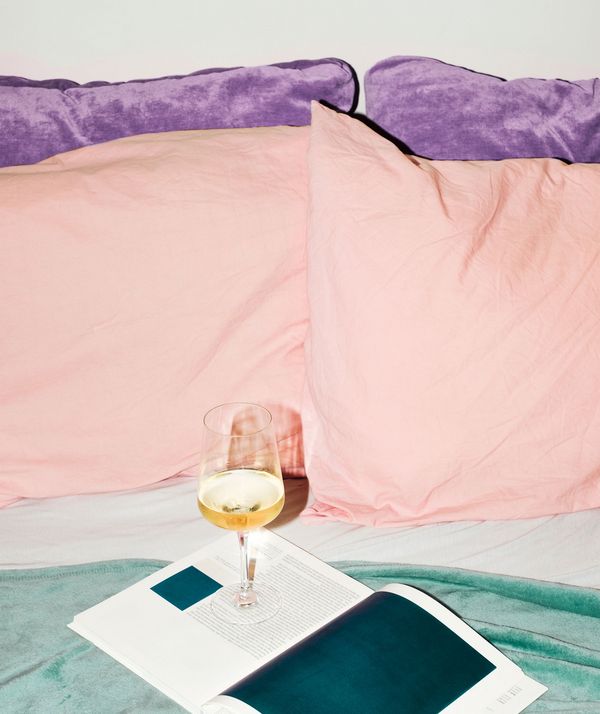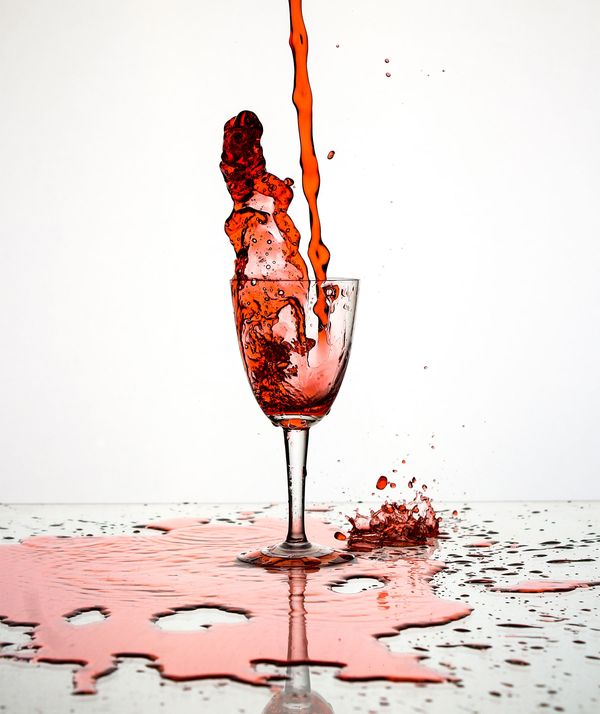My motto is: focus, consume, concentrate. The first step is the optical perception. Wine connoisseurs can read a lot into a glass of wine just by looking at it. By looking at the “sea of tears” on the inside of the glass, they deduce how much sugar or alcohol it contains. The closer together the drops run down the inside of the glass, the higher the levels of alcohol and sugar. Sometimes, small crystals are visible. They arise when minerals combine with the tartaric acid at low storage temperatures. However, this has no impact on the flavour. In principle, it is impossible to recognise the quality of a wine only by looking at it.

Madelyne Meyer (Edvin Uncorked) explains the basics for (currently) clueless wine lovers
Many people who enjoy a glass of wine are baffled by the jargon that surrounds it, which often seems like a secret code. So they simply nod politely when someone recommends a wine, never understanding the finer details. This is how Madelyne Meyer once felt. Growing up in a Swiss family of wine traders, as a child she spent many an hour in her parents’ wine cellar, where she learned to love the flavours and aromas. Her degree as a certified wine specialist was a rather sobering experience: “I began to realise that drinking wine is more fun than acquiring knowledge about wine,” she jovially admits. At first, she had trouble relating to the dusty terminology and technical vocabulary. Because nothing should stand in the way of one’s passion for, and enjoyment of, a good drop, Madelyne Meyer translated everything she learned into beautiful illustrations and a simple language. A handbook, as it were, for everyone who wanted to understand wine “clear and unfiltered”. She shared her most important steps and we jotted them down.

The first step in a wine tasting:
What part your nose plays:
Sense of smell is unique to every individual. Some people are very receptive to olfactory stimuli, whereas others have more sensitive palates. The nose comes into when detecting aroma faults. These aren’t easy for beginners to identify – but we’ll come to that later. What’s important to know? A wine often smells different from how it tastes because the nose can only detect aromas and possibly the alcohol. With the palate, however, it is possible to taste sugar and, in the case of red wine, tannin (the drying effect on the palate). The aromas can be divided into the following categories: fruity, like apricot or apple; floral, like elderflower; plant-like, such as basil; flavoursome, like liquorice; earthy, like mushrooms, or secondary aromas (from the oak barrel) such as vanilla or cinnamon.
This is where the bouquet takes centre stage: this refers to the floral, fruity or earthy smell of a wine when it is in the glass.
What you should know about aroma faults:
Sniffing out faults requires lots of expertise and concentration. Not all faults are unambiguous, nor easy to discover. In general, you should smell the wine itself, not the cork, to uncover faults. This is because the wine can exhibit other faults beyond the cork smell. If it smells of mould, moist cardboard or a damp cellar, it is corked. This can originate from the cork bark or during the wine production process. Musty, petrol-like smells indicate faults that arise during the oxidation process. A vinegary smell is the result of too much alcoholic fermentation during production. If freshly bottled wines show these signs, they can vanish within a few minutes with no impact on the quality of the wine.
On palate pleasers:
To begin with, rest assured: aroma perception is very subjective. Whether you taste apricot, gooseberry, pesto or your exfoliant honey facial rub depends on your personal taste perception. This is all part of the joy of wine: complexity and multi-layeredness. It’s the infinite variety of flavour notes and different structures that makes no wine like another. And every person tastes and smells something different.

Overall impression? Overall impression!
In the very first instance, taste is the first deciding factor: is this wine to my taste? In the next round, it’s about the quality level, meaning whether the wine contains one of the aforementioned faults or is “clean”. If the overall impression is positive, it’s time to move on to the nuances. Here, connoisseurs talk of the finish. This means the duration and intensity with which the wine lingers on the palate after swallowing. The longer it lingers, the more intense the experience.
A little jargon:
The body of a wine can be described pretty much as you would a human body: full-bodied, flat, round, caressing, crisp, fresh, expressive and much more.
These substances are part of the body:
Alcohol: On the palate, we perceive alcohol as heat. The warmer it feels, the higher the alcohol content.
Tannins: These are the tanning agents in red wine that leave a dry sensation on the tongue. They take time to integrate into the red wine.
Acidity: This stimulates the flow of saliva. Without enough acidity, a wine can seem flat.
Sugar: Sugar makes a wine taste fuller, rounder and heavier.
Knowledge for show-offs:
“Despite its acidity, a wine balanced beyond compare!”
“How wonderfully the tannins have integrated here.”
“It may not be that complex, but certainly a crowd pleaser.”
“At last: a wine that reflects its terroir almost perfectly.”



